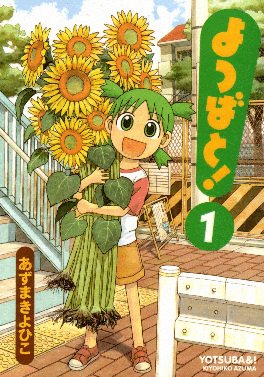Per correr miglior acque alza le vele
omai la navicella del mio ingegno
An Intro(?)
I’m not even sure about all this, but for once a weird event inspired me to act on a hunch. But anyway - languages, which I say are funny; oh, and Japanese, which I say it’s really funny. Let’s start from my situation with it, how poor my Japanese is.1 I’ve studied Japanese completely on my own in a period of two years, stopping a lot and for a lot of time. I’ve obviously watched animes for an embarassingly huge portion of my life, so I can easily sense some meaning few times, especially linking them with sound or more or less accurate expressions, not to mention the short dictionary that every weeb develop.2 I’ve got some upper hands, since Italian phonetic system is pretty similar to Japanese, my pronunciation isn’t a problem. The problem is the writing system.
Japanese writing system
The Japanese use three writing systems: two syllabic alphabets, called Hiragana and Katakana, plus a group of ideograms, called Kanji. Unless your mnemonical skills are way worser than mine(and that’s rare), you can learn the alphabets easily, and learning them properly is useful to practise on words pronunciation. Kanji, well…that’s another story.

These are quite nicely written kanji. My handwriting is way worse
Writing Kanji is a mess, remembering them is a mess, since there are a lot of them.3 What I found really illuminating about them is that you can avoid mnemonically learning all of them, like the Japanese do in school. Kanji are composed of at most 214 radicals. They can be composed of only one or more radicals. Once learnt these, you can learn the stroke order, so that when you find a new kanji that you haven’t seen before you can:
- count the number of strokes used to write the whole kanji
- identify the first radical and its number of strokes
- go to jisho.org, open the radicals menu, search in the list(that’s indexed according to the number of strokes for each radical) for the first radical
- select it, and then search in the top list for your kanji, knowing its total number of strokes
(Example needed? Example granted! :))
Let’s consider this ideogram: 好
You can find it in words like 好き(suki, to like) or お好み(okonomi, choice). It’s composed by the radical for woman, and the radical for child. Both are composed by three strokes, so the kanji totally counts six strokes. Let’s search for the woman radical (notice the highlights). Once selected, the top list is updated and you can find your kanji (notice the highlights). And it’s done!
What else?
I know the basics, like every weeb willing to learn japanese, thanks to the emblematic ![]() Itazuraneko’s sources
Itazuraneko’s sources ![]() but also thanks to some other language books in Italian(which can be useful to learn expressions and words, but the basic grammar is more easily explained by Itazuraneko). But in this period I’m pretty lazy, so I decided I should go for something different. So, I went for the other common choice: reading Yotsuba To!
but also thanks to some other language books in Italian(which can be useful to learn expressions and words, but the basic grammar is more easily explained by Itazuraneko). But in this period I’m pretty lazy, so I decided I should go for something different. So, I went for the other common choice: reading Yotsuba To!

For those who don’t know, it’s a manga written by Azuma Kiyohiko, and it’s about a quirky and lively 5 years old girl. Let’s have a look at the first page. Following the classic manga-reading order,4 I can immediately say that the first three panels are absolutely fine. I know もうすぐだぞ loosely means ‘we’ve arrived.’ Fourth panel: I loved experimenting on reading すげえ as she would, and I don’t think I was really troubled by the ‘voice-over’ balloon(because that’s voice-over, I don’t think she would switch from すげえ to… that). If you’re not familiar with names abbreviations among relatives,5 you could easily miss that よーちゃん (yo-chan) is an abbreviation for Yotsuba, the protagonist’s name. That sentence anyway didn’t sound goood to me at first. If I should translate it without any kind of adaptation, I’d say ‘Yotsuba is full of this place!’ After searching for いっぱい (ippai) on Jisho, I see that いっぱいあるな could mean ‘being completely brimmed with (an emotion or a quality)’. I think it can be rendered as ‘Yo-chan is totally (focused) on this place!’ Then he says ‘Oh right, there is also a shop,’ and she makes a screaming cat call like ‘EVEN THE SHOP?!’ in turn.
I’ve read some other pages but - I must get used to write these posts, I’ll call it a day. Noice!
Fun fact. I’ve read this expression (‘I’m sorry my English is poor’) quite often on the Internet, in youtube section comments or some weird chan, but I’ve always found it slightly awkward. Jeez, ‘I’m not fluent in language x’ goes way better. ↩
If you want to make a Japanese laugh, just randomly utter okane! (o like in hospital , a like in hat, e like in pet but even more open if you can), with this hand gesture; it worked for me ↩
Japanese Kanji originally consisted of something around 50.000 ideograms. Now things are different, fortunately. ↩
If you don’t know it: shame on you, you’re on your own; don’t care plus didn’t ask
 . ↩
. ↩For more info, read the chapter ‘The Use of Names’ in Etiquette Guide to Japan (Tuttle Publishing). ↩
Comments powered by Disqus.